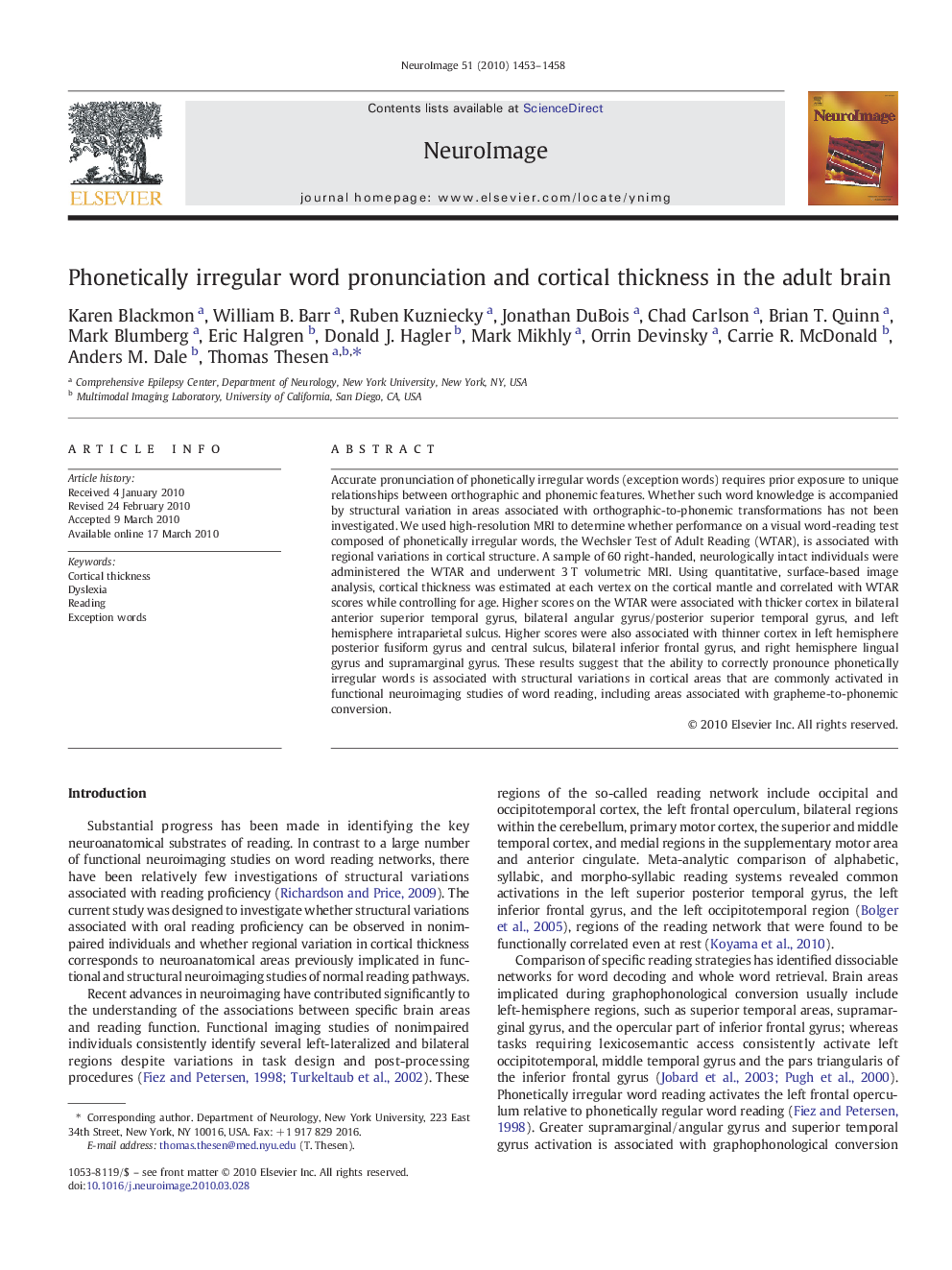| Article ID | Journal | Published Year | Pages | File Type |
|---|---|---|---|---|
| 6035830 | NeuroImage | 2010 | 6 Pages |
Accurate pronunciation of phonetically irregular words (exception words) requires prior exposure to unique relationships between orthographic and phonemic features. Whether such word knowledge is accompanied by structural variation in areas associated with orthographic-to-phonemic transformations has not been investigated. We used high-resolution MRI to determine whether performance on a visual word-reading test composed of phonetically irregular words, the Wechsler Test of Adult Reading (WTAR), is associated with regional variations in cortical structure. A sample of 60 right-handed, neurologically intact individuals were administered the WTAR and underwent 3Â T volumetric MRI. Using quantitative, surface-based image analysis, cortical thickness was estimated at each vertex on the cortical mantle and correlated with WTAR scores while controlling for age. Higher scores on the WTAR were associated with thicker cortex in bilateral anterior superior temporal gyrus, bilateral angular gyrus/posterior superior temporal gyrus, and left hemisphere intraparietal sulcus. Higher scores were also associated with thinner cortex in left hemisphere posterior fusiform gyrus and central sulcus, bilateral inferior frontal gyrus, and right hemisphere lingual gyrus and supramarginal gyrus. These results suggest that the ability to correctly pronounce phonetically irregular words is associated with structural variations in cortical areas that are commonly activated in functional neuroimaging studies of word reading, including areas associated with grapheme-to-phonemic conversion.
